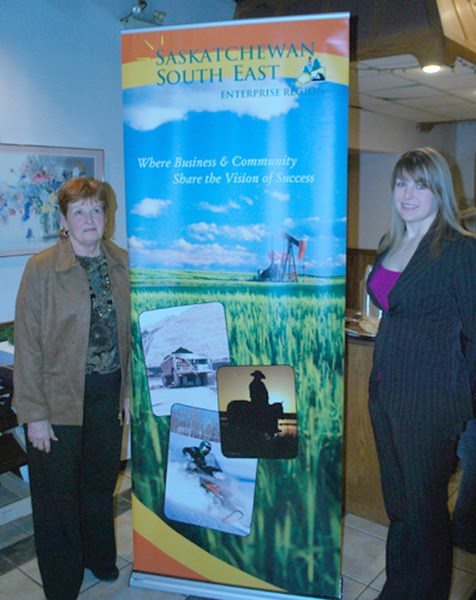The Saskatchewan 小蓝视频 East Enterprise Region (SSEER) held a meeting in Carlyle on Tuesday, Jan. 18, to further assist communities in advancing municipal housing initiatives.
The second meeting of communities with members of SSEER looking into the housing shortages that are presently occurring throughout the region, this meeting was only open to the 12 communities whose council had advanced resolutions to work towards initiative solutions.
"This is a meeting where we wanted the participants to be a part of the solution, and not just sight-seers," said Edie Spagrud, CEO of SSEER. "To ensure that we asked communities that wanted to be a part of the initiative to pass an order-in-council to take an active role in the program."
Estimates of the housing shortfall within the region vary, but without a doubt, all of the communities in 小蓝视频east Saskatchewan are feeling the pinch, one way or another.
Joining the meeting on Jan. 18 were guest speakers from Saskatoon, Moose Jaw, as well as from the Ministry of Municipal Affairs.
Introducing the evening, Spagrud began by offering some statistics collected by SSEER.
"One of the things we had to do was recognizing the key elements of the situation, and provide and assessment of the trends," Spagrud said. "The growth the region has seen has been fuelled by the drilling activity related to the Bakkan oil formation."
"The state of North Dakota has developed some trends regarding the oil fields," Spagrud continued. "According to their numbers, it is expected that there will be 10-plus years of drilling activity, followed by 20-plus years of production, followed by a gradual tapering off."
Once Spagrud had finished her introduction, the first speaker for the evening, Allan Wallace, head of Neighbourhood Planning for the city of Saskatoon, was introduced.
Speaking to the crowd of about 30 people via telephone, Wallace began by explaining the issues he had faced in Saskatoon regarding housing, and compared them to the housing problems in the region.
"When I first started in 2006, we were facing a housing deficit of about 3,500 units," Wallace said. "This included people who were in housing that was unaffordable, unsustainable, or inadequate."
Undertaking a series of initiatives that saw the city work with industry, non-profit organizations, and for-profit builders, the city was able to rapidly increase available housing.
"We had a housing target of creating 500 new units each year," Wallace explained. "Now we have to tell some of the builders to scale back, or hold off on projects, because they are out-building our available funding through the different programs."
Programs such as incentives and support for first-time home buyers were discussed, with the idea that these individuals who are first-time home buyers, who had previously been renters, would then free up rental housing as they moved.
Support for the projects in Saskatoon came from a wide range of sources, including CMHC (Canadian Mortgage and Housing Corporation.)
Also attending the meeting were representatives of various private companies.
One in particular, Titan Structures, specialized in pre-built RTM-style accommodations, which included modular multi-suite layouts for labour.
"Housing is a problem in many of the communities we have been dealing with," said Bob Holowaty of Titan. "We are hearing from employers about the impact the lack of housing is having on their ability to attract workers."
"With projects like the ones 小蓝视频 presented here in place, it will go a long way towards alleviating those concerns," Holowaty said. "That is why we're here, to offer additional option for rapid construction to both communities and to private businesses."
"Housing is creating a bottleneck for the economic development in the region," Spagrud said. "We would like to help the communities forge ahead and develop some housing strategies to make sure that the development we've seen in the south east over the last few years becomes something permanent into the future."
"If people who come to work in the region can't find suitable housing, they'll move on eventually," Spagrud said. "The key to keeping the population here is to make sure they have a place to live."
As the communities that have made the commitment to move forward with their individual housing develop plans, The Observer will continue to report on these communities' efforts and the no-doubt unique programs that will come from the initiative.
Speakers at the second meeting of the SSEER regional housing initiative included Allan Wallace of Saskatoon, Debbie Thorn of Moose Jaw, Jackie Bevel of CMHC, and Martin Verhaege of the provincial municipal affairs office.




